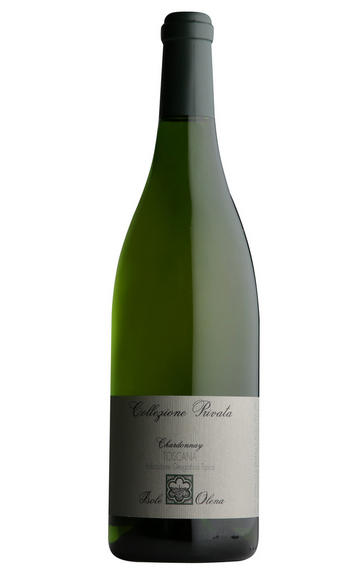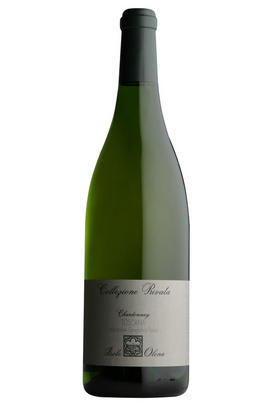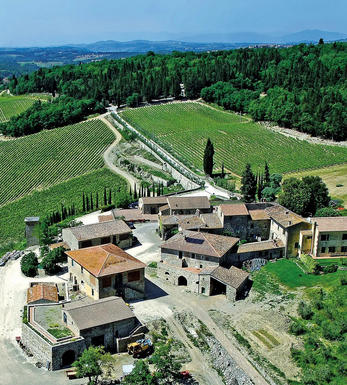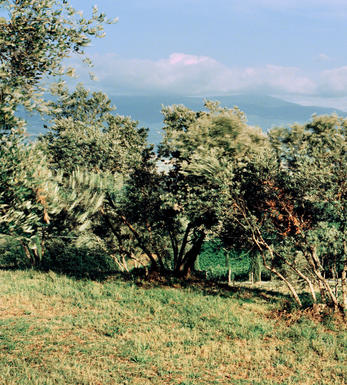
2020 Chardonnay, Collezione Privata, Isole e Olena, Tuscany, Italy

Critics reviews
Intense, round and concentrated, with more power than the 2021, this 2020 showcases melon, citrus peel and some wood notes, with a long, sweet vein of tropical fruits and ripe nectarine. It finishes oaky yet fresh, with some spices and herbal hints.
Drink 2023 - 2034
James Button, Decanter.com (June 2023)
This 2020 Isole e Olena Collezione Privata Chardonnay is such a beautifully elegant wine. The first impressions on the nose are of lime zest, honey, delicate cream and white peach which carry into the flavours on the palate. There is a beautiful melting texture with a creamy, long, savory finish and a little twist of freshness and salty lime peel. It is young now, but is already delightful to drink. If you can resist drinking it now, it is worth waiting a year or two to experience the full range of aromas and flavors. A really stunning wine.
Drink 2023 - 2047
Susan Hulme, The Wine Independent (January 2023)
About this WINE

Isole e Olena
The Isole et Olena Estate, run by Paolo de Marchi for 45 years, is a Tuscan property that has seen a dramatic rise in quality over the last few decades. Paolo's family, originally from Piedmont, purchased the estate in the 1960s. His attention to detail in both the vineyard and the winery was the driving force that turned quality around. The estate was purchased by the EPI group recently, who have expertise in Tuscany, also owning the famed Montalcino estate Biondi-Santi.
The wines have Cepparello at their head, a barrique-aged Sangiovese classified as an IGT - because at the time of its creation in the 1980s a wine comprising 100% Sangiovese could not legally be labelled as Chianti. There is a Chianti Classico and a Vin Santo, as well as some excellent wines from the Collezione de Marchi label, including a Syrah called Eremo, a Cabernet Sauvignon and a Chardonnay.

Tuscany
Responsible for only 6 percent of Italy's total wine production in 2006 (half that of the Veneto) Tuscany may not be a heavyweight in terms of quantity, but as the home of two of the country's most famous fine wines - Chianti and Brunello di Montalcino - it certainly holds its own in terms of quality.
Tuscany is Italy's most ancient wine region, dating back to the 8th century BC when the Etruscans developed the area in parallel with the Greeks, before ceding to the Romans. Along with building roads and sewers, they developed the region's viticultural potential, using wood for winemaking rather than amphorae, and passing their expertise onto their French neighbours. With the demise of Rome in the 5th century AD, the Longobards established Lucca as the capital of what was then known as Tuscia. Florence and Siena became banking and trading hubs during the Middle Ages, with Chianti – then a white wine – first documented in the 14th century.Tuscany passed from the Medicis to the Habsburgs as part of the Holy Roman Empire, and then onto the Austrian Empire before becoming part of a reunified Italy in 1861. The quality of Chianti was first recognised by the Grand Duke of Tuscany, Cosimo III, who classified its finest areas in 1716.
Located in the west-central part of the country with the Tyrrhenian Sea lapping its coastline, Tuscany's climate ranges from Mediterranean on the coast to continental deep in the Apennines. More than two thirds of the province is covered with hills, an important terroir factor in the production of fine Tuscan wine. The finest such areas are Chianti Classico, Chianti Rufina, Brunello di Montalcino, Vino Nobile di Montepulciano, Morellino di Scansano and Bolgheri. Sangiovese (in its various clones) is the black grape of choice.
Recommended producers: Valgiano, Caiarossa, Villa Calcinaia, Bibbiano, Badia a Coltibuono, La Serena, Scopetone, Lisini, Sesti, San Giuseppe, Cerbaiona.

Chardonnay
Chardonnay is often seen as the king of white wine grapes and one of the most widely planted in the world It is suited to a wide variety of soils, though it excels in soils with a high limestone content as found in Champagne, Chablis, and the Côte D`Or.
Burgundy is Chardonnay's spiritual home and the best White Burgundies are dry, rich, honeyed wines with marvellous poise, elegance and balance. They are unquestionably the finest dry white wines in the world. Chardonnay plays a crucial role in the Champagne blend, providing structure and finesse, and is the sole grape in Blanc de Blancs.
It is quantitatively important in California and Australia, is widely planted in Chile and South Africa, and is the second most widely planted grape in New Zealand. In warm climates Chardonnay has a tendency to develop very high sugar levels during the final stages of ripening and this can occur at the expense of acidity. Late picking is a common problem and can result in blowsy and flabby wines that lack structure and definition.
Recently in the New World, we have seen a move towards more elegant, better- balanced and less oak-driven Chardonnays, and this is to be welcomed.


Buying options
Add to wishlist
Description
This is great if you like this warm-climate, oaked Chardonnay. Very deep and rounded on the nose and palate, creamy and slightly smoky, rather lush and extracted with a lovely finish; perhaps a touch more acidity would have been welcome, but this was an excellent example of elegant white wine.
Berry Bros. & Rudd
wine at a glance
Delivery and quality guarantee